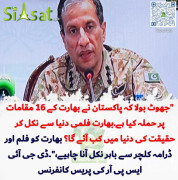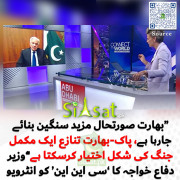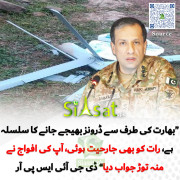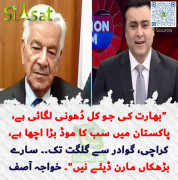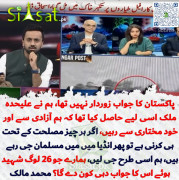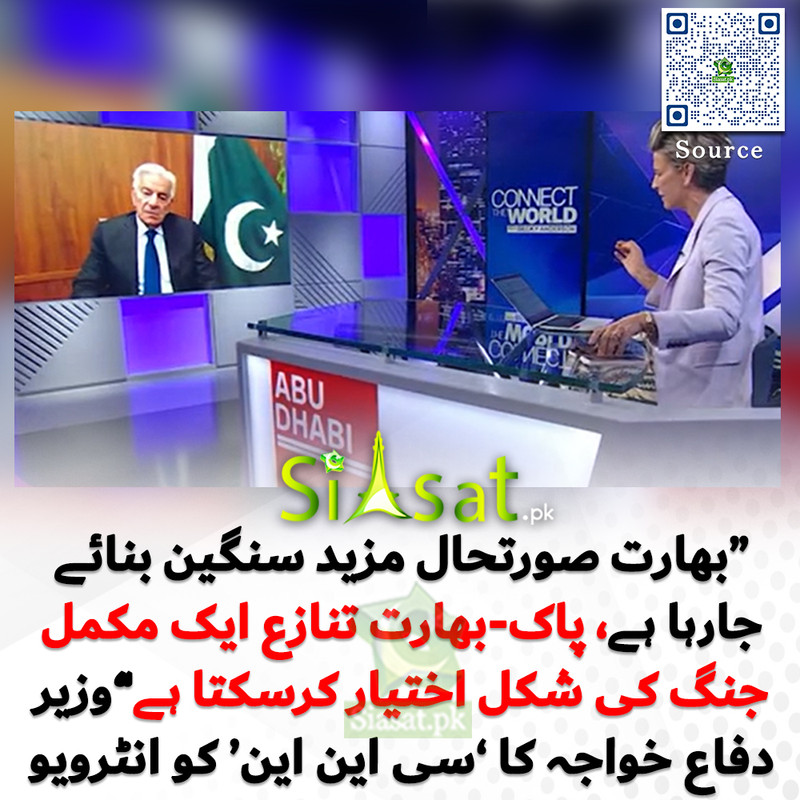Crackdown on illegal immigrants abroad or restricting quotas to Indians are a major concern to Indias politicians. The latest statistics from US Department of Homeland Security shows that the numbers of Indian illegal migrants jumped 125% since 2000! Ever wondered why Indians migrate to another countries but no one comes to India for a living? Here are some Indian facts: Poverty Graph
According to WFP, India accounts around 50% of the worlds hungry. (more than in the whole of Africa) and its fiscal deficit is one of the highest in the world. Indias Global Hunger Index (GHI) score is 23.7, a rank of 66th out of 88 countries. Indias rating is slightly above Bangladesh but below all other South Asian nations and India is listed under ALARMING category. Ref: IFPRI Country Report on India
Around six out of 10 Indians live in the countryside, where abject poverty is widespread. 34.7 % of the Indian population lives with an income below $ 1 a day and 79.9 % below $ 2 a day. According to the Indias planning commission report 26.1 % of the population live below the poverty line. [World Banks poverty line of $1 a day, but the Indian poverty line of Rs 360 a month, or 30 cents a day].
The Current Account Balance of India
A major area of vulnerability for us is the high consolidated public-debt to GDP ratio of over 70 percent (and) consolidated fiscal deficit, says the Governor of Reserve Bank of India (RBI), Mr. Yaga Venugopal Reddy.
According to CIA world fact book, the Current account balance of India is -37,510,000,000 (minus) while China is the wealthiest country in the world with $ 426,100,000,000 (Plus) . India listed as 182 and China as no.1 [CIA: The world fact book]
Human Development vs GDP growth
The Human Development Report for 2009 released by the UNDP ranked India 134 out of 182 countries, working it out through measures of life expectancy, education and income. India has an emigration rate of 0.8%. The major continent of destination for migrants from India is Asia with 72.0% of emigrants living there. The report found that Indias GDP per capita (purchasing power parity) is $2,753, far below Malaysias $13,518. China listed as 92 with PPP of $5383. Read the statistics from UNDP website.
Population:
According to the Indian census of 2001, the total population was 1.028 billion. Hindus numbered 827 million or 80.5 %. About 25 per cent (24 million) of those Hindus are belonging to Scheduled Castes and Tribes. About 40 per cent (400 million) are Other Backward Castes.
15 per cent Hindu upper castes inherited majority of Indias civil service, economy and active politics from British colonial masters. And thus the caste system virtually leaves lower caste Hindus in to an oppressed majority in Indias power structure. Going by figures quoted by the Backward Classes Commission, Brahmins alone account for 37.17 per cent of the bureaucracy. [Who is Really Ruling India?]
The 2004 World Development Report mentions that more than 25% of Indias primary school teachers and 43% of primary health care workers are absent on any given day!
Living conditions of Indians
89 percent of rural households do not own telephones; 52 percent do not have any domestic power connection. There are daily power cuts even in the nations capital. The average brownout in India is three hours per day during non-monsoon months, 17 hours daily during the monsoon. The average village is 2 kilometers away from an all-weather road, and 20 percent of rural habitations have partial or no access to a safe drinking-water supply. [Tarun Khanna, Yale Center for the Study of Globalization]
According to the National Family Health Survey data (2005-06), only 45 per cent of households in the country had access to improved sanitation.
Education
India has over 35 per cent of the worlds total illiterate population. [UNESCO Education for All Report 2008] Only 66 per cent people are literate in India (76 per cent men and 54 per cent women)
About 40 million primary school-age children in India are not in school. More than 92 % children cannot progress beyond secondary school. According to reports, 35 per cent schools dont have infrastructure such as blackboards and furniture. And close to 90 per cent have no functional toilets. Half of Indias schools still have leaking roofs or no water supply.
Japan has 4,000 universities for its 127 million people and the US has 3,650 universities for its 301 million, India has only 348 universities for its 1.2 billion people. In the prestigious Academic Ranking of World Universities by Institute of Higher Education, Shanghai Jiao Tong, only two Indian Universities are included. Even those two IITs in India found only a lower slot (203-304) in 2007 report. Although Indian universities churn out three million graduates a year, only 15% of them are suitable employees for blue-chip companies. Only 1 million among them are IT professionals.
Health
India today allocates lower than one per cent gross domestic product (GDP) to health. According to United Nations calculations, Indias spending on public health as a share of GDP is the 18th lowest in the world. 150 million Indians are blind. 2.13 per cent of the total population (21.9 million) live with disabilities in India. Yet, only 34 per cent of the disabled are employed [Census 2001] India has the single highest share of neonatal deaths in the world, 2.1 million.
107,000 Leprosy patients live in India. 15.3 % of the population do not survive to the age of forty. Serpent attacks kill as many as 50,000 Indians while the cobra occupies a hallowed place in the Hindu religion. Heart disease, strokes and diabetes cost India an estimated $9 billion in lost productivity in 2005. The losses could grow to a staggering $200 billion over the next 10 years if corrective action is not taken quickly, says a study by the New Delhi-based Indian Council for Research on International Economic Relations.
There are only 585 rural hospitals compared to 985 urban hospitals in the country. Out of the 6,39,729 doctors registered in India, only 67,576 are in the public sector and the rest either in private sectors or abroad, pointing towards the severity of the problem. According to a survey by NSSO (National Sample Survey Organisation), 40 per cent of the people hospitalised have either had to borrow money or sell assets to cover their medical expenses. Over 85 per cent of the Indian population does not have any form of health coverage.
Tuberculosis (TB) is a major public health problem in India. India accounts for one-fifth of the global TB incident cases. Each year about 1.8 million people in India develop TB, of which 0.8 million are infectious cases. It is estimated that annually around 330,000 Indians die due to TB. [WHO India]
Economy under the siege of Elite Hindus
In India, wealth of 36 families amounts to $ 191 billion, which is one-fourth of Indias GDP. In other words, 35 elite Hindu families own quarter of Indias GDP by leaving 85 % ordinary Hindus as poor!
The dominant group of Hindu nationalists come from the three upper castes ( Brahmins, Kshatriyas, and Vaishyas ) that constitute only 10 per cent of the total Indian population. But, they claim perhaps 80 % of the jobs in the new economy, in sectors such as software, biotechnology, and hotel management.
India is also one of the most under-banked major markets in the world with only 6 bank branches per 1,000 sq kms, according to the World Bank, and less than 31% of the population has access to a bank account. According to Indias national agency, (NABARD), around 60 per cent people are not having access to financial institutions in India. This figure is less than 15 per cent in developed countries.
Corruption
According to TI, 25 % of Indians paid bribe to obtain a service. 68 % believe that governmental efforts to stop the corruption as ineffective. More than 90 % consider police and political parties as the worst corrupt institutions. 90 % of Indians believe that corruption will increase within the next 3 years. Corruption is a large tax on Indian growth, It delays execution, raises costs and destroys the moral fiber. says Prof. Rama Murthi. Transparency International estimates that Indian truckers pay something in the neighborhood of $5 billion annually in bribes to keep freight flowing. According to Rahul ****hi, only 5 per cent of development funds reached their intended recipients due to hierarchical corruption in the country! [Financial Times]
Discrimination against Dalits
Crime against Dalits occur every 20 minutes in India. Every day 3 Dalit women are raped, 2 Dalits are murdered and 2 Dalit houses are burnt down! These figures represent only a fraction of actual incidents since many Dalits do not register cases for fear of retaliation by the police and upper-caste Hindu individuals. Official figures show that there are still 0.343 million manual scavengers in India from Dalit community. More than 165 million Dalits in India are simply abused by their Hindu upper castes for their birth! . [HRW Report2007]
Human Rights
When it comes to Human Rights issues in India, it is not ratified the UN Convention against Torture, its citizens do not have the opportunity to find recourse in remedies that are available under international law. The victims are trapped with the local Hindu caste system, which in every aspect militates against their rights.
India has a very poor record of protecting the privacy of its citizens, according to the latest report from Privacy International (PI). India scored 1.9 points, which makes it an extensive surveillance society. A score between 4.1 and 5.0 (the highest score) would mean a country consistently upholds human rights standards. PI is a watchdog on surveillance and privacy invasions by governments and corporations. [Fake encounter killings are rampant in India. This extra judicial killings are inspired by theological texts of Brahmins like Artha Shastra and Manusmriti which teaches espionage and torture methods. Every such killing of an innocent person, branded a terrorist, has encouraged the killer cops to target socially excluded communities like dalits, tribals and minorities.
Indias intelligence agencies like IB, RAW, etc seems to be thoroughly infiltrated by foreign secret services which support powerful weapon producing nations. Formed in 1947, IB is engaged in wiretapping, spy on political opponents and sometimes indicting on false criminal charges. The IB also has numerous authors, bloggers and media persons.
According to the National Human Rights Commission, as on 30th June 2004, there were 3,32,112 prisoners in Indian jails out of which 2,39,146 were under trial prisoners. Thats more than 70 %. Indias jails hold a disproportionate number of the countrys minority Muslims, a sign of discrimination and alienation from the Hindu majority. The bar association in Indias largest state, Uttar Pradesh, has refused to represent 13 Muslim suspects accused bombing courthouses in 2005 . A large part of police officers, Indian attorneys and judges appear regularly on the events organized by notorious Hindu militant groups. Prison statistics of Indian Jails can be seen from National Crime Record Bureau, here
India is a parliamentary democracy, but rather less than a fully free society. The human rights group Freedom House ranks India as a 2 (on a scale of 1 to 7, with 1 the highest) for political rights and 3 for civil liberties. Elections are generally free but, notes Freedom House, Government effectiveness and accountability are also undermined by pervasive criminality in politics, decrepit state institutions, and widespread corruption. The State Department observes: There were numerous reports that the government and its agents committed arbitrary or unlawful killings, including extrajudicial killings of suspected criminals and insurgents, or staged encounter deaths. Read Freedom House Report from here.
Minorities
About 20 %, or 200 million, are religious minorities. Muslims constitutes 138 million or 13.4 5, Christians 24 million or 2.3 %, Sikhs 19 million or 2 %, Buddhists 8 million or 0.8 % and Jains 4 million or 0.4 %. Others numbered 6.6 million or 0.6 %. According to Mr. Tahir Mahmood, an Indian Muslim journalist, The 2.3 % Christians in the Indian population cater to 20 % of all primary education in India, 10 % of all the literacy and community health care, 25 % of all existing care of destitute and orphans, 30 % of all the handicapped, lepers and AIDS patients etc.
Discrimination against Minority Muslims
Recently, Justice Rajinder Sachar Committee report admitted that 138 Million Muslims across India are severely under-represented in government employment, including Public Sector Units. Ironically, West Bengal, a communist ruled state reported 0 (zero) percent of Muslims in higher positions in its PSUs! It has found that the share of Muslims in government jobs and in the lower judiciary in any state simply does not come anywhere close to their population share. The only place where Muslims can claim a share in proportion to their population is in prison! (Muslims convicts in India is 19.1%, while the number of under trials is 22.5%, which exceed their population ratio) . A note sent on January 9 by the army to the defence ministry in 2004 says that only 29,093 Muslims among a total of 1.1 million personnel a ratio of 2.6 %, which compares poorly with the Muslims 13.8 % share in the Indian population. Officially, Indian Army dont allow head count based on religion.
A Muslim child attends school for three years and four months, compared to the national average of four years. Less than two percent of the students at the elite Indian Institutes of Technology comprise of the Muslim community. According to the National Knowledge Commission member Jayathi Ghosh, there is a need to re-orient official strategies for ensuring better access of Muslim children to schooling outside the madrasas which cater to only four per cent of children from the community.
need an urgent and quick response from indi memebers!!!!!!!!!!!!!!!
this is just the begning more facts are in the upcomming post, stay input!!!!!!!!!!!!!!!!!
According to WFP, India accounts around 50% of the worlds hungry. (more than in the whole of Africa) and its fiscal deficit is one of the highest in the world. Indias Global Hunger Index (GHI) score is 23.7, a rank of 66th out of 88 countries. Indias rating is slightly above Bangladesh but below all other South Asian nations and India is listed under ALARMING category. Ref: IFPRI Country Report on India
Around six out of 10 Indians live in the countryside, where abject poverty is widespread. 34.7 % of the Indian population lives with an income below $ 1 a day and 79.9 % below $ 2 a day. According to the Indias planning commission report 26.1 % of the population live below the poverty line. [World Banks poverty line of $1 a day, but the Indian poverty line of Rs 360 a month, or 30 cents a day].
The Current Account Balance of India
A major area of vulnerability for us is the high consolidated public-debt to GDP ratio of over 70 percent (and) consolidated fiscal deficit, says the Governor of Reserve Bank of India (RBI), Mr. Yaga Venugopal Reddy.
According to CIA world fact book, the Current account balance of India is -37,510,000,000 (minus) while China is the wealthiest country in the world with $ 426,100,000,000 (Plus) . India listed as 182 and China as no.1 [CIA: The world fact book]
Human Development vs GDP growth
The Human Development Report for 2009 released by the UNDP ranked India 134 out of 182 countries, working it out through measures of life expectancy, education and income. India has an emigration rate of 0.8%. The major continent of destination for migrants from India is Asia with 72.0% of emigrants living there. The report found that Indias GDP per capita (purchasing power parity) is $2,753, far below Malaysias $13,518. China listed as 92 with PPP of $5383. Read the statistics from UNDP website.
Population:
According to the Indian census of 2001, the total population was 1.028 billion. Hindus numbered 827 million or 80.5 %. About 25 per cent (24 million) of those Hindus are belonging to Scheduled Castes and Tribes. About 40 per cent (400 million) are Other Backward Castes.
15 per cent Hindu upper castes inherited majority of Indias civil service, economy and active politics from British colonial masters. And thus the caste system virtually leaves lower caste Hindus in to an oppressed majority in Indias power structure. Going by figures quoted by the Backward Classes Commission, Brahmins alone account for 37.17 per cent of the bureaucracy. [Who is Really Ruling India?]
The 2004 World Development Report mentions that more than 25% of Indias primary school teachers and 43% of primary health care workers are absent on any given day!
Living conditions of Indians
89 percent of rural households do not own telephones; 52 percent do not have any domestic power connection. There are daily power cuts even in the nations capital. The average brownout in India is three hours per day during non-monsoon months, 17 hours daily during the monsoon. The average village is 2 kilometers away from an all-weather road, and 20 percent of rural habitations have partial or no access to a safe drinking-water supply. [Tarun Khanna, Yale Center for the Study of Globalization]
According to the National Family Health Survey data (2005-06), only 45 per cent of households in the country had access to improved sanitation.
Education
India has over 35 per cent of the worlds total illiterate population. [UNESCO Education for All Report 2008] Only 66 per cent people are literate in India (76 per cent men and 54 per cent women)
About 40 million primary school-age children in India are not in school. More than 92 % children cannot progress beyond secondary school. According to reports, 35 per cent schools dont have infrastructure such as blackboards and furniture. And close to 90 per cent have no functional toilets. Half of Indias schools still have leaking roofs or no water supply.
Japan has 4,000 universities for its 127 million people and the US has 3,650 universities for its 301 million, India has only 348 universities for its 1.2 billion people. In the prestigious Academic Ranking of World Universities by Institute of Higher Education, Shanghai Jiao Tong, only two Indian Universities are included. Even those two IITs in India found only a lower slot (203-304) in 2007 report. Although Indian universities churn out three million graduates a year, only 15% of them are suitable employees for blue-chip companies. Only 1 million among them are IT professionals.
Health
India today allocates lower than one per cent gross domestic product (GDP) to health. According to United Nations calculations, Indias spending on public health as a share of GDP is the 18th lowest in the world. 150 million Indians are blind. 2.13 per cent of the total population (21.9 million) live with disabilities in India. Yet, only 34 per cent of the disabled are employed [Census 2001] India has the single highest share of neonatal deaths in the world, 2.1 million.
107,000 Leprosy patients live in India. 15.3 % of the population do not survive to the age of forty. Serpent attacks kill as many as 50,000 Indians while the cobra occupies a hallowed place in the Hindu religion. Heart disease, strokes and diabetes cost India an estimated $9 billion in lost productivity in 2005. The losses could grow to a staggering $200 billion over the next 10 years if corrective action is not taken quickly, says a study by the New Delhi-based Indian Council for Research on International Economic Relations.
There are only 585 rural hospitals compared to 985 urban hospitals in the country. Out of the 6,39,729 doctors registered in India, only 67,576 are in the public sector and the rest either in private sectors or abroad, pointing towards the severity of the problem. According to a survey by NSSO (National Sample Survey Organisation), 40 per cent of the people hospitalised have either had to borrow money or sell assets to cover their medical expenses. Over 85 per cent of the Indian population does not have any form of health coverage.
Tuberculosis (TB) is a major public health problem in India. India accounts for one-fifth of the global TB incident cases. Each year about 1.8 million people in India develop TB, of which 0.8 million are infectious cases. It is estimated that annually around 330,000 Indians die due to TB. [WHO India]
Economy under the siege of Elite Hindus
In India, wealth of 36 families amounts to $ 191 billion, which is one-fourth of Indias GDP. In other words, 35 elite Hindu families own quarter of Indias GDP by leaving 85 % ordinary Hindus as poor!
The dominant group of Hindu nationalists come from the three upper castes ( Brahmins, Kshatriyas, and Vaishyas ) that constitute only 10 per cent of the total Indian population. But, they claim perhaps 80 % of the jobs in the new economy, in sectors such as software, biotechnology, and hotel management.
India is also one of the most under-banked major markets in the world with only 6 bank branches per 1,000 sq kms, according to the World Bank, and less than 31% of the population has access to a bank account. According to Indias national agency, (NABARD), around 60 per cent people are not having access to financial institutions in India. This figure is less than 15 per cent in developed countries.
Corruption
According to TI, 25 % of Indians paid bribe to obtain a service. 68 % believe that governmental efforts to stop the corruption as ineffective. More than 90 % consider police and political parties as the worst corrupt institutions. 90 % of Indians believe that corruption will increase within the next 3 years. Corruption is a large tax on Indian growth, It delays execution, raises costs and destroys the moral fiber. says Prof. Rama Murthi. Transparency International estimates that Indian truckers pay something in the neighborhood of $5 billion annually in bribes to keep freight flowing. According to Rahul ****hi, only 5 per cent of development funds reached their intended recipients due to hierarchical corruption in the country! [Financial Times]
Discrimination against Dalits
Crime against Dalits occur every 20 minutes in India. Every day 3 Dalit women are raped, 2 Dalits are murdered and 2 Dalit houses are burnt down! These figures represent only a fraction of actual incidents since many Dalits do not register cases for fear of retaliation by the police and upper-caste Hindu individuals. Official figures show that there are still 0.343 million manual scavengers in India from Dalit community. More than 165 million Dalits in India are simply abused by their Hindu upper castes for their birth! . [HRW Report2007]
Human Rights
When it comes to Human Rights issues in India, it is not ratified the UN Convention against Torture, its citizens do not have the opportunity to find recourse in remedies that are available under international law. The victims are trapped with the local Hindu caste system, which in every aspect militates against their rights.
India has a very poor record of protecting the privacy of its citizens, according to the latest report from Privacy International (PI). India scored 1.9 points, which makes it an extensive surveillance society. A score between 4.1 and 5.0 (the highest score) would mean a country consistently upholds human rights standards. PI is a watchdog on surveillance and privacy invasions by governments and corporations. [Fake encounter killings are rampant in India. This extra judicial killings are inspired by theological texts of Brahmins like Artha Shastra and Manusmriti which teaches espionage and torture methods. Every such killing of an innocent person, branded a terrorist, has encouraged the killer cops to target socially excluded communities like dalits, tribals and minorities.
Indias intelligence agencies like IB, RAW, etc seems to be thoroughly infiltrated by foreign secret services which support powerful weapon producing nations. Formed in 1947, IB is engaged in wiretapping, spy on political opponents and sometimes indicting on false criminal charges. The IB also has numerous authors, bloggers and media persons.
According to the National Human Rights Commission, as on 30th June 2004, there were 3,32,112 prisoners in Indian jails out of which 2,39,146 were under trial prisoners. Thats more than 70 %. Indias jails hold a disproportionate number of the countrys minority Muslims, a sign of discrimination and alienation from the Hindu majority. The bar association in Indias largest state, Uttar Pradesh, has refused to represent 13 Muslim suspects accused bombing courthouses in 2005 . A large part of police officers, Indian attorneys and judges appear regularly on the events organized by notorious Hindu militant groups. Prison statistics of Indian Jails can be seen from National Crime Record Bureau, here
India is a parliamentary democracy, but rather less than a fully free society. The human rights group Freedom House ranks India as a 2 (on a scale of 1 to 7, with 1 the highest) for political rights and 3 for civil liberties. Elections are generally free but, notes Freedom House, Government effectiveness and accountability are also undermined by pervasive criminality in politics, decrepit state institutions, and widespread corruption. The State Department observes: There were numerous reports that the government and its agents committed arbitrary or unlawful killings, including extrajudicial killings of suspected criminals and insurgents, or staged encounter deaths. Read Freedom House Report from here.
Minorities
About 20 %, or 200 million, are religious minorities. Muslims constitutes 138 million or 13.4 5, Christians 24 million or 2.3 %, Sikhs 19 million or 2 %, Buddhists 8 million or 0.8 % and Jains 4 million or 0.4 %. Others numbered 6.6 million or 0.6 %. According to Mr. Tahir Mahmood, an Indian Muslim journalist, The 2.3 % Christians in the Indian population cater to 20 % of all primary education in India, 10 % of all the literacy and community health care, 25 % of all existing care of destitute and orphans, 30 % of all the handicapped, lepers and AIDS patients etc.
Discrimination against Minority Muslims
Recently, Justice Rajinder Sachar Committee report admitted that 138 Million Muslims across India are severely under-represented in government employment, including Public Sector Units. Ironically, West Bengal, a communist ruled state reported 0 (zero) percent of Muslims in higher positions in its PSUs! It has found that the share of Muslims in government jobs and in the lower judiciary in any state simply does not come anywhere close to their population share. The only place where Muslims can claim a share in proportion to their population is in prison! (Muslims convicts in India is 19.1%, while the number of under trials is 22.5%, which exceed their population ratio) . A note sent on January 9 by the army to the defence ministry in 2004 says that only 29,093 Muslims among a total of 1.1 million personnel a ratio of 2.6 %, which compares poorly with the Muslims 13.8 % share in the Indian population. Officially, Indian Army dont allow head count based on religion.
A Muslim child attends school for three years and four months, compared to the national average of four years. Less than two percent of the students at the elite Indian Institutes of Technology comprise of the Muslim community. According to the National Knowledge Commission member Jayathi Ghosh, there is a need to re-orient official strategies for ensuring better access of Muslim children to schooling outside the madrasas which cater to only four per cent of children from the community.
need an urgent and quick response from indi memebers!!!!!!!!!!!!!!!
this is just the begning more facts are in the upcomming post, stay input!!!!!!!!!!!!!!!!!

